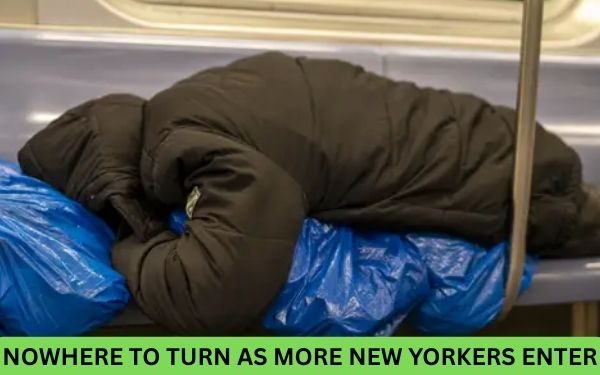The ongoing shortage of affordable housing in New York City is pushing more residents into homeless shelters, according to a new report.
The Coalition for the Homeless, a nonprofit advocacy organization, released its annual findings on Thursday. The report revealed that although the number of asylum-seekers in shelters declined significantly last year, the population of non-migrant New Yorkers in the shelter system rose by nearly 12%.
Related posts
This shift comes as city officials and nonprofit providers brace for potential funding cuts from the Trump administration, which could threaten housing and food assistance programs. Advocates warn these reductions might deepen poverty and increase homelessness. At the same time, rents have soared, pandemic-era support programs have ended, and only 0.4% of apartments priced under $1,100 remain vacant.
According to the coalition, nearly 40% of single adults in shelters cited household conflicts, overcrowding, or unsafe living conditions as reasons for seeking shelter.
For families with children, factors like domestic violence and eviction were major contributors to homelessness.
“People have nowhere to go because there just has not been any serious investment in affordable housing for the people who need it,” said Dave Giffen, executive director of the Coalition for the Homeless.
“Both the mayor and the governor have really been focused on the appearances of the crisis and not the fundamental reasons for the crisis,” he continued. “There is simply no place for low-income New Yorkers to live.”
New York City operates five separate shelter systems tailored to different populations—youth, families, single adults, survivors of domestic violence, and people with HIV/AIDS. The largest of these, overseen by the Department of Homeless Services (DHS), has increased placements into permanent housing, mainly through subsidized vouchers.
Neha Sharma, a spokesperson for DHS, said Mayor Eric Adams’ administration made vital investments to support New Yorkers following the end of pandemic-related aid. Without those efforts, she noted, the housing crisis could have led to an even larger shelter population.
“While this is a testament to this administration’s commitment to addressing homelessness and housing insecurity, we need more support from other levels of government to comprehensively address the citywide crisis of homelessness and expand rehousing solutions,” Sharma said.
The DHS reported a 24% increase in shelter exits to permanent housing in fiscal year 2024. Its internal data showed an even greater 38% increase over the calendar year and a 7% rise in the number of non-asylum-seeking residents.
Still, the Coalition for the Homeless argued that the city’s housing shortage continues to push more people into shelters. The organization said housing programs remain underfunded and hampered by red tape.
One major concern is the drop in the number of shelter residents moving into public housing. Though thousands of NYCHA units sit vacant, just 500 shelter residents secured one of those apartments in 2024—down from 1,500 in 2021.
City officials said they’ve since improved the process and expect to double the number of NYCHA placements this fiscal year.
However, the coalition criticized Mayor Adams for focusing more on removing homeless individuals from public spaces and increasing police presence than on long-term housing solutions. During a nine-month sweep of homeless encampments, 3,500 people were displaced but only 114 were placed in shelters, according to a previous Gothamist report.
City Hall spokesperson William Fowler defended Adams’ approach, highlighting the administration’s work to help tens of thousands of homeless New Yorkers secure housing. He also pointed to the mayor’s investments in new affordable housing and his City of Yes initiative, which aims to create over 80,000 homes in the next 15 years.
“Mayor Adams has been clear that there is no dignity in withering away on the streets without the ability to help yourself, and there is no moral superiority in just walking by those individuals and doing nothing,” Fowler said.
“Whether it’s addressing the migrant crisis or providing a safety net to all New Yorkers, for decades, New York City has absorbed more of the cost and responsibility as other levels of government have abandoned our most vulnerable through cuts,” he added. “We need and expect more from our state and federal partners and hope that advocates will use their voices to call on them to do the same.”
The report also emphasized the growing need to house individuals with mental health conditions as the state expands involuntary commitments. Giffen noted the lack of follow-up data for people discharged from psychiatric care.
“There is still no housing available for those individuals and they end up right back on the streets. It is a revolving door that’s been going on for decades,” he said.
The coalition found that the number of inpatient psychiatric beds had declined since 2014. Many were closed during the pandemic, and hospitals have little financial incentive to reopen them.
It also attributed the rise in shelter numbers to failures in other public systems. The city’s shelters have become a “catch-all” for individuals released from jails, prisons, psychiatric hospitals, health care facilities, and foster care. The report revealed that 43% of those discharged from state prisons eventually land in a New York City shelter.









